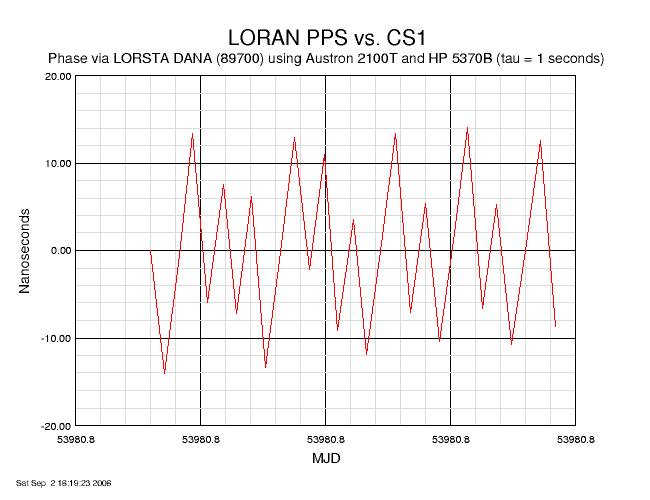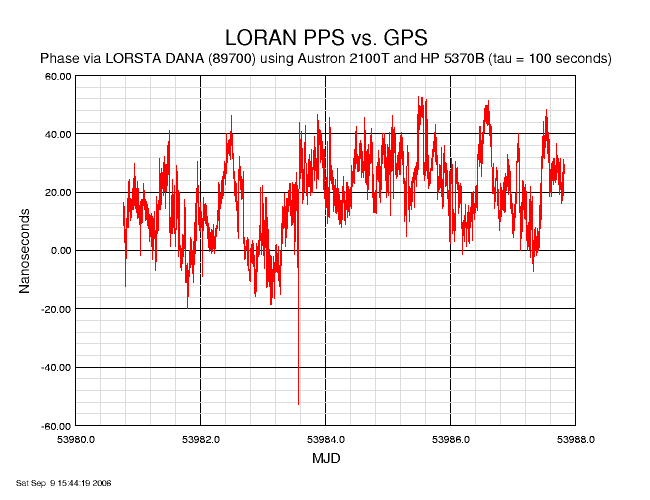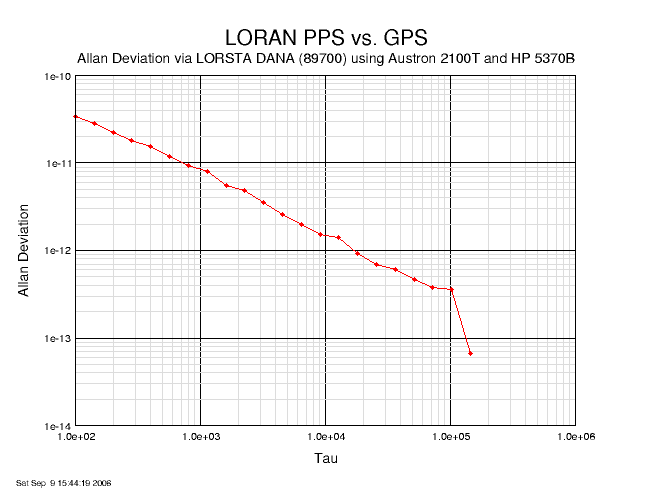LORAN-C Frequency Measurement Capabilities
While LORAN does not directly provide a timecode and thus, unlike GPS, cannot be used directly for time calibrations, with a little extra work it is possible to lock a PPS signal to the LORAN system in a way that provides traceability to USNO. This is possible because every so often the beginning of the LORAN pulse group coincides with the beginning of a UTC second. The USNO calculates when these times occur, and by telling the receiver when the next Time of Coincidence (TOC) will occur, it can lock its PPS signal to that time. The Austron 2100T provides this function.Here are some data plots from my 2100T.
First, this is what the PPS signal looks like when compared every second to the PPS from an HP 5061A Cesium standard. Note that there's about a 20 nanosecond sawtooth in this 30 second sample:

This is about a week's worth of data comparing the LORAN PPS against GPS. This time, I've averaged the signals over 100 second intervals to remove some of the noise. Note that apart from one brief glitch, LORAN tracks GPS to within 50 nanoseconds or so, and that the GPS and LORAN clocks are within a couple of parts in 1014 of each other:

Finally, here's the Allan Deviation of that data:
